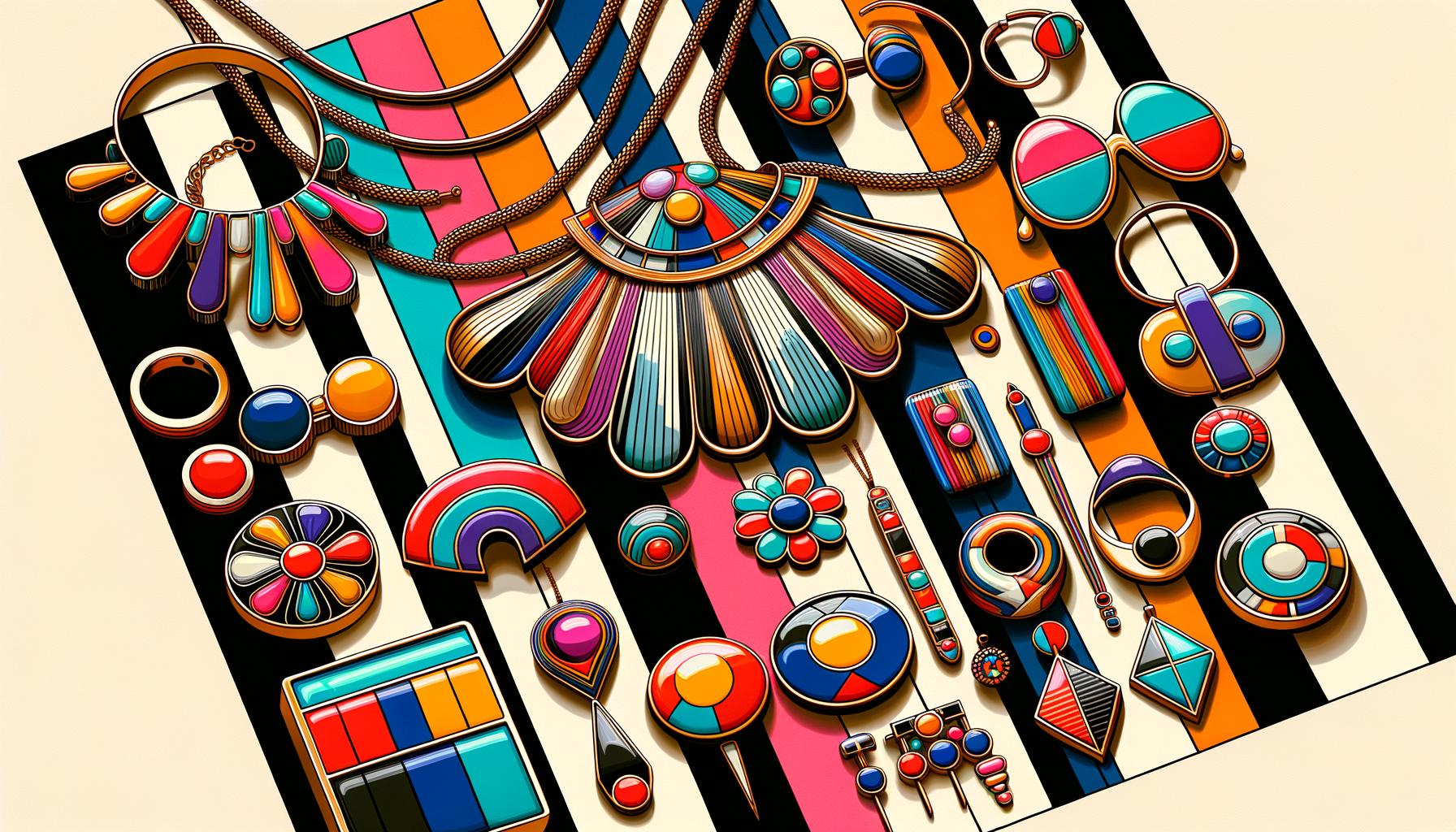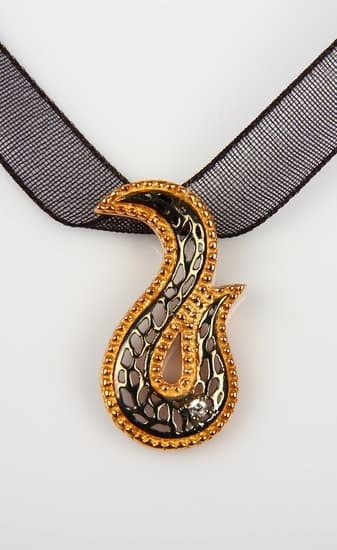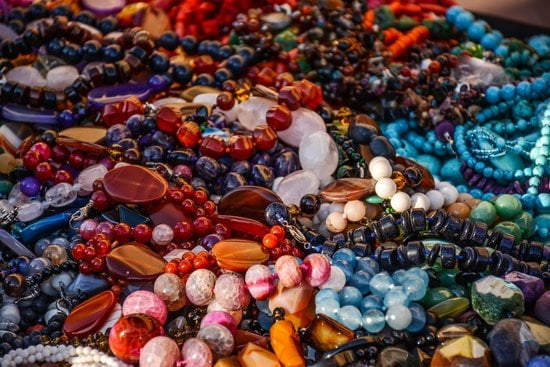The 1960s was a decade marked by groundbreaking changes and a cultural renaissance that profoundly influenced various facets of society, including fashion and jewelry. As the world witnessed monumental shifts in social norms, political landscapes, and artistic expressions, these transformations inevitably spilled over into personal adornments, giving rise to what can only be described as jewelry in the 1960s: a revolution in style.
The era was characterized by an explosion of creativity and experimentation that permeated every aspect of daily life. The emergence of the counterculture movement challenged traditional values and encouraged people to break free from convention, promoting a spirit of individuality and self-expression. This newfound attitude was vividly reflected in the jewelry designs of the time, which began to move away from conservative styles toward bold, eclectic pieces that defied previous norms.
Intriguingly, this revolution in jewelry design coincided with other significant movements of the 1960s such as civil rights activism, feminist strides, and an evolving youth culture driven by music icons like The Beatles and Bob Dylan. These cultural currents not only stirred the imaginations of designers but also resonated with a broader audience eager for innovation.
Jewelry became more than just an accessory; it evolved into a statement piece that spoke volumes about one’s beliefs, affiliations, and unique identity. Through this lens, we can better appreciate how deeply intertwined the transformation of jewelry in this dynamic decade was with its broader historical context.
The Social and Cultural Influences on 1960s Jewelry
The Impact of the Counterculture Movement on Fashion and Accessories
The counterculture movement of the 1960s was a pivotal force in reshaping fashion and accessories, including jewelry. As young people rebelled against the conservative norms of the 1950s, they sought new ways to express their individuality and challenge societal expectations.
This push for authenticity and freedom manifested in eclectic, expressive jewelry designs that broke away from traditional aesthetics. Long necklaces adorned with peace signs, oversized hoop earrings, and colorful beadwork became symbols of a generation eager to display its political and cultural dissent through adornment.
Embracing Ethnic and Global Inspirations
Political events such as decolonization and increased global travel brought about a heightened awareness of diverse cultures, which significantly influenced jewelry in the 1960s: a revolution in style. Designers looked beyond Western traditions to incorporate ethnic motifs and materials into their work.
Crafts such as African beadwork, Indian silver pieces, and Native American turquoise jewelry gained popularity among youth eager to celebrate global cultures. These influences reflected broader societal shifts toward multicultural appreciation and an urge to break boundaries imposed by previous generations.
Music and Youth Culture’s Direct Role in Jewelry Trends
The burgeoning music scene also had an undeniable impact on 1960s jewelry trends. Icons like The Beatles, Janis Joplin, and Jimi Hendrix not only set musical standards but also became trendsetters in fashion. Young fans emulated their favorite musicians’ distinctive styles by adopting bold accessories like bohemian anklets, layered chokers, and statement rings.
Furthermore, the rise of youth subcultures such as the Mods emphasized sleek lines and minimalist mid-century modern designs that were directly reflected in contemporary jewelry pieces. The synergy between music culture and fashion turned these artists into unofficial spokespeople for new jewelry styles that encapsulated the era’s spirit.
In essence, the dynamic interplay between social movements, political events, global influences, music icons, and evolving youth culture profoundly shaped jewelry design throughout this memorable decade.
Iconic Jewelry Designers of the 1960s
The 1960s era was marked by an explosion of creativity, with iconic jewelry designers pushing the boundaries of traditional craftsmanship and aesthetics. Figures like Kenneth Jay Lane emerged as major influencers in the realm of fashion accessories.
Known for his innovative approach, Lane revolutionized costume jewelry through the use of bold faux gems and ornate designs that catered to a new generation craving affordable yet stylish adornments. His work attracted high-profile fans such as Jacqueline Kennedy Onassis and Audrey Hepburn, thereby underscoring jewelry in the 1960s: a revolution in style.
On another front, Elsa Peretti’s minimalist and organic designs for Tiffany & Co. represented a stark departure from Lane’s opulence but were equally impactful. Her unconventional use of sterling silver and sculptural forms introduced a streamlined elegance that appealed to modern sensibilities. Notably, Peretti’s bone cuffs became iconic pieces that continued to influence contemporary design long after their debut.
Other notable designers who made significant contributions during this revolutionary decade include:
- Jean Schlumberger: Celebrated for his intricate nature-inspired creations at Tiffany & Co. he brought whimsical artistry to fine jewelry.
- David Webb: Revered for his audacious enamel work and animal motifs, Webb redefined luxury with playful extravagance.
- Pierre Cardin: Originally known for his futuristic fashion designs, Cardin extended his avant-garde vision to accessories, blending geometric abstraction with mod aesthetics.
These designers collectively encapsulated the essence of the 1960s, showcasing how dynamic perspectives could transform something as timeless as jewelry into cutting-edge art forms reflective of their vibrant age. Their lasting influence can still be seen in today’s fashions and continues to inspire new generations within the industry.
Materials and Techniques
In the vibrant era of the 1960s, jewelry designers began to experiment with a wide array of unconventional materials, breaking away from the traditional use of precious metals and gemstones. Plastic became a highly favored material due to its affordability and versatility.
Designers like Kenneth Jay Lane capitalized on this, creating bold pieces that were both accessible and visually striking. Rings, necklaces, and earrings crafted from colorful plastics flooded the market, offering consumers a fresh way to express their individuality without breaking the bank.
Wood was another material that saw innovative use during this time. Designers incorporated it into jewelry to evoke a more natural and earthy aesthetic, often infusing ethnic influences into their creations. This shift towards organic materials mirrored the larger cultural movement back to nature and simpler living. Glass also emerged as a popular alternative; innovative techniques allowed for glass to be molded into various shapes and designs, while its inherent translucence added an element of intrigue to each piece.
Innovative techniques further propelled this revolution in style. Bold enameling enabled designers to add vibrant colors to metal pieces, standing out dramatically from more subdued traditional styles. Sculptural designs became prominent as well, leading to three-dimensional forms that pushed artistic boundaries in jewelry making. These elements collectively underscored a pivotal shift within the industry toward experimentation and self-expression, embodying the core spirit of jewelry in the 1960s: a revolution in style.
- Plastic – Colorful and affordable
- Wood – Natural aesthetic with ethnic influences
- Glass – Translucent allure through innovative molding techniques
- Bold Enameling – Adding vibrant colors to metal pieces
- Sculptural Designs – Three-dimensional artistic expressions
Signature Styles and Trends
Geometric Shapes and Bold Statements
One of the most defining characteristics of jewelry in the 1960s: a revolution in style, was the emphasis on geometric shapes and bold, statement pieces. Rectangles, circles, triangles, and other sharp-edged designs were prevalent in earrings, necklaces, and bracelets. These geometric forms often used contrasting colors and materials to create visual interest.
Designers like Paco Rabanne pushed the boundaries by incorporating metals and plastics into elaborate, sculptural pieces that stood out as works of art themselves. The appeal of these designs lay not only in their eye-catching aesthetics but also in their symbolism of breaking away from conventional norms.
Oversized Accessories
The 1960s also saw a vogue for oversized accessories that matched the decade’s larger-than-life personas and burgeoning celebrity culture. Massive hoop earrings, chunky bangles, and large pendant necklaces became must-have items. Influenced heavily by fashion icons such as Twiggy and Brigitte Bardot, jewelry designers created pieces that didn’t just complement an outfit but dominated it.
This trend extended to oversized brooches adorned with vivid gemstones or even whimsical motifs inspired by pop art. The preference for large-scale jewelry was more than just a fashion statement-it represented individuality and an unrestrained embrace of new artistic expressions.
Ethnic Influences
Another remarkable trend during this revolutionary period was the growing influence of ethnic styles in mainstream fashion jewelry. As global awareness expanded through increased travel and media exposure, designers began incorporating elements from African, Asian, Native American, and Middle Eastern cultures into their creations.
Beaded necklaces inspired by Maasai traditions or turquoise pieces reflecting Navajo craftsmanship gained popularity among those seeking unique articulation of identity through their adornments. These ethnic influences brought a rich diversity to jewelry in the 1960s: a revolution in style that celebrated cultural heritage while simultaneously pushing innovative boundaries.
Pop art’s vibrant prints found translation into playful enamel work on earrings and pins; mod fashions emphasized sleek lines often seen replicated in streamlined metal designs; meanwhile, psychedelic patterns mirrored hallucinogenic experiences through colorful arrays of beads or swirled glass pendants-connecting wearable artistry directly with broader societal movements shaping this transformative era.
The Role of Pop Culture and Media
In the 1960s, pop culture and media played a crucial role in shaping public tastes and fashion trends, including those in jewelry. With the advent of television becoming a household staple, shows and movies became powerful platforms for showcasing new styles.
Actresses like Audrey Hepburn donned elegant pieces in films such as “Breakfast at Tiffany’s,” prompting a surge in popularity for similar designs among the masses. Similarly, Twiggy, the iconic model of the era known for her mod style, often sported bold and innovative jewelry that resonated deeply with the youth culture of the time.
Celebrities became influential trendsetters, wearing pieces that were instantly noted and desired by fans. Jewelry in the 1960s: a revolution in style was highly driven by what pop icons chose to wear both on-screen and off-screen. For instance, Elizabeth Taylor’s penchant for oversized statement jewelry made such pieces immensely popular, ushering in an era where extravagance was embraced rather than shunned.
Fashion magazines also had a significant impact during this transformative decade. Publications like Vogue and Harper’s Bazaar curated editorials that highlighted cutting-edge jewelry designs from both established brands and emerging designers. These magazines provided a visual feast of high-fashion looks that women aspired to emulate. The synergy between print media and popular culture ensured that revolutionary styles reached a wider audience rapidly.
| Influential Figures | Impact on Jewelry Trends |
|---|---|
| Audrey Hepburn | Popularized elegant pieces like pearls |
| Twiggy | Epitomized bold mod fashion jewelry |
| Elizabeth Taylor | Made oversized statement pieces trendy |
Jewelry as a Form of Self-Expression
The 1960s was a decade marked by profound social and cultural changes, which were vividly reflected in the fashion and jewelry of the time. Jewelry in the 1960s: a revolution in style, became an essential medium for individuals to express their identity, beliefs, and personal statements. As society moved away from more traditional norms, so did the designs and purposes of jewelry, offering wearers new means to illustrate their uniqueness and break free from conservative aesthetics.
During this era, jewelry started to serve not merely as an ornament but as a bold statement of one’s personality and affiliations. Influenced by the burgeoning women’s liberation movement, many women opted for pieces that defied previous conventions.
Instead of delicate and understated jewels, they wore dramatic, attention-grabbing designs that conveyed strength and independence. This shift to larger-than-life accessories symbolized the broader quest for gender equality and carved out a new space where women could celebrate their individuality openly.
Moreover, the explosion of counterculture movements significantly contributed to how people viewed and wore jewelry. Hippie subcultures embraced handcrafted items made from natural materials like wood, leather, and beads-choices that communicated a deep connection with nature and rejection of mass-produced consumer goods. Simultaneously, youth driven by mod fashion tendencies adorned themselves with minimalistic yet striking geometric patterns.
These evolving trends presented an eclectic mix that allowed individuals to choose styles resonating with their unique personas or political viewpoints. Thus, transitioning from strictly decorative elements to powerful symbols of self-expression marked one of the most transformative aspects in the history of accessories during this period.
Legacy of 1960s Jewelry
The jewelry revolution of the 1960s left an indelible mark on the design philosophies and practices that continue to shape modern jewelry. One key impact is the continued use of unconventional materials that became popular during this transformative decade. Today, designers frequently incorporate plastics, resin, wood, and glass into their creations, echoing the bold experimentation with materials seen in the 1960s. This trend towards non-traditional elements allows for greater creative freedom and accessibility within the field of jewelry design.
Additionally, the aesthetic principles born out of this era, such as geometric shapes and oversized pieces, remain significant influences on contemporary styles. Modern designers often draw inspiration from the structured forms and vibrant colors that characterized 1960s designs. As a result, today’s market sees a plethora of statement pieces featuring dynamic angles and lively hues-an homage to an era that redefined what jewelry could represent in terms of form and function.
The emphasis on self-expression through wearable art also finds its roots in this revolutionary period. The idea that jewelry could serve not just as ornamentation but as a powerful medium for individual identity continues to resonate strongly today.
Contemporary clients seek pieces that speak to their personal narratives or make bold statements about who they are-themes first explored during this groundbreaking decade. In many ways, modern jewelry is still navigating the path forged by the daring innovators who turned heads with their audacious designs in the 1960s.
| Element | Legacy |
|---|---|
| Materials | Continued use of plastics, resin, wood, glass |
| Aesthetic Principles | Geometric shapes, oversized pieces |
| Self-Expression | Jewelry as a medium for individual identity |
Conclusion
The 1960s stand as a pivotal period in the history of jewelry, marking a departure from conventional styles and ushering in a wave of innovation and self-expression. This decade wasn’t merely about adornment; it was about making bold statements that resonated with the era’s broader social changes.
The interplay between the political upheavals, cultural shifts, and booming youth culture culminated in what can only be described as jewelry in the 1960s: a revolution in style that redefined how individuals perceived and utilized accessories.
Key designers like Kenneth Jay Lane and Elsa Peretti were at the forefront of this transformation, pushing boundaries with their daring use of materials such as plastics, wood, and glass. These innovations weren’t just about aesthetics; they symbolized a break from tradition and an embrace of modernity.
Techniques like bold enameling and sculptural designs provided a canvas for creativity previously unseen in mainstream jewelry. The trends of geometric shapes, oversized pieces, and ethnic influences captured the eclectic spirit of the times, reflecting everything from pop art to psychedelic fashion.
Pop culture played an undeniable role in propagating these new styles. Celebrities such as Audrey Hepburn and Twiggy became icons whose fashion choices influenced millions. Meanwhile, fashion magazines amplified these trends, bringing them into households around the world.
Ultimately, jewelry evolved into a powerful medium for personal expression during this transformative decade. Its legacy endures today, influencing contemporary design with elements birthed during this revolutionary time. The 1960s were more than just another decade-they were an era that forever altered the landscape of jewelry design, leaving an indelible mark on both history and contemporary style alike.
Frequently Asked Questions
What Were the Jewelry Trends in the 60s?
Jewelry in the 1960s was characterized by its bold, vibrant designs and eclectic influences. The era saw a shift towards more unconventional styles, reflecting the decade’s spirit of experimentation and rebellion against traditional norms. Mod-inspired geometric shapes, bright colors, and oversized pieces became highly fashionable.
Pop art influenced jewelry design with items featuring iconic symbols and playful themes. Additionally, natural materials like wood, beads, and shells were popularized by the Bohemian movement, adding an earthy charm to many accessories of that time.
What Was the Fashion Revolution in the 1960s?
The fashion revolution in the 1960s was marked by a dramatic departure from the conservative styles of previous decades, embracing boldness and self-expression. London’s Carnaby Street became the epicenter of this shift as young designers introduced daring hemlines like the miniskirt, created by Mary Quant. The decade celebrated youth culture with vibrant patterns, psychedelic prints, and audacious color combinations becoming mainstream.
Unisex fashion also emerged during this period, allowing for greater fluidity between male and female styles. This revolution wasn’t just aesthetic; it symbolized a broader cultural movement towards freedom and social change.
What Type of Accessories Was Popular in the 1960s?
Accessories played a crucial role in defining 1960s fashion aesthetics with several types achieving iconic status throughout the decade. Rounded “granny glasses” often tinted in different colors became an essential style statement reflective of John Lennon’s influence on youth fashion.
Go-go boots made from shiny materials were emblematic of mod culture and often paired with miniskirts or shift dresses for a striking effect. Large hoop earrings and statement necklaces added to this visual impact while headwear such as berets or floppy hats contributed to various subcultural looks ranging from beatnik to hippie styles

Welcome to my jewelry blog! My name is Sarah and I am the owner of this blog.
I love making jewelry and sharing my creations with others.
So whether you’re someone who loves wearing jewelry yourself or simply enjoys learning about it, be sure to check out my blog for insightful posts on everything related to this exciting topic!





